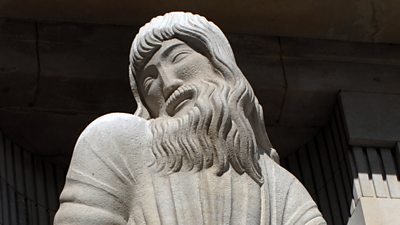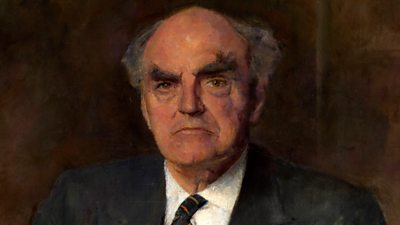The National Media Museum in Bradford holds the bulk of a large collection of technological items developed by the 大象传媒 over the years. Pioneering cameras, ground breaking microphones, and eccentric machinery that recorded some of the earliest broadcast sounds are featured here.
大象传媒 Microphone
The AXBT was the 4th generation design of the original Marconi Type A microphone (X, B and T representing improvements) widely used by the 大象传媒 from the early 1930s onwards. The ribbon microphone was particularly good in studio situations and the double-sided design which accepted sound from front and back but not from the side was particularly suited to voice.
It also gave the microphone its characteristic shape, which has entered popular culture as a symbolic image of broadcasting, as well as being the icon for audio in nearly all computer software.
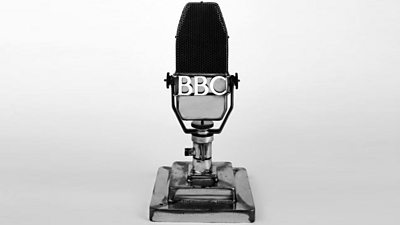
The King's Radio
In 1935 the McMichael company presented King George V with their newly designed portable radio set. Designed much like a picnic set and finished in lavish crocodile skin, the lid opened up which then turned into the loudspeaker.
This unique set was acquired as part of a group of radios from a private collector. The radio was shown to HM The Queen during her visit to Broadcasting House in April 2006.
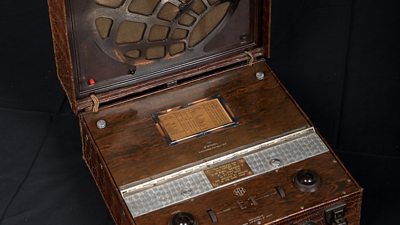
Bakelite Bush TV
The Bakelite Bush 22, launched in 1952, is regarded by designers and the media as the icon of post-war television sets. Many families watched the Coronation on a Bakelite Bush 22. It was also one of the first sets the public could tune themselves without professional help.
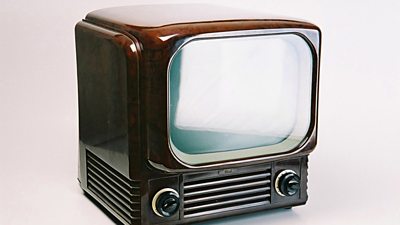
Blattnerphone
The 大象传媒 had no viable means of recording sound until 1930. Among the first recording machines was the Blattnerphone, designed by early British film maker Louis Blattner. The device used 6mm steel tape to record a very basic audio signal - good enough for voice but not for music.
Spools were large and heavy, editing was done by soldering the tape, and the high speed at which the machine ran (5 ft per second) meant it was hazardous for the operator - a break in the tape could result in razor-edged steel flying around the studio.
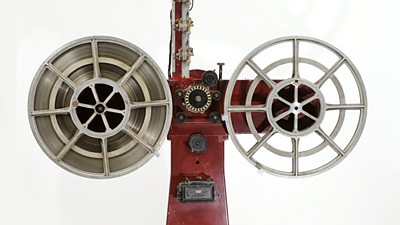
Monoscope camera test card
In the days before 24-hour TV, channels would often shut down for several hours a day. But this caused a problem for TV shops and engineers, who needed a signal to test their equipment. Originally, this was literally a camera pointing at an image on a card, but the static image could burn itself into the camera.
The invention of the monoscope camera allowed the test-card image to be built into a camera and broadcast without any problems. The image is test card C, but the most famous is test card F - the little girl and the clown playing noughts and crosses - and a version of that was still being used in 2007 by Sky's HD service.
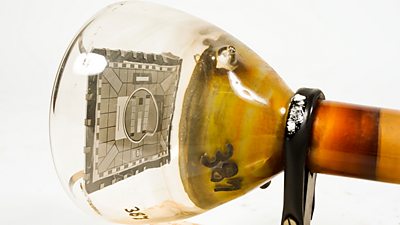
Big Ben microphone
When the 大象传媒 first started in 1922, the hourly chimes were actually played by the announcer on a set of chime bells in the studio. But Big Ben was broadcast to usher in 1924, and later, a microphone was installed inside the clock tower and connected directly to Broadcasting House.
This moving coil microphone is one of a number that were used over the years and its low sensitivity allowed it to be installed right by the bell. Engineers experimented with microphones placed further away, but they picked up the sound of the clock mechanism and even London traffic.
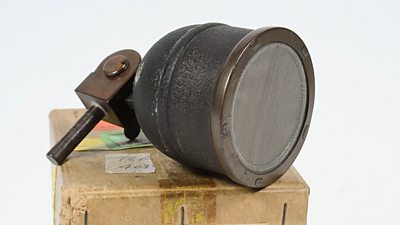
Meat-safe microphone
This microphone was the first put to general use by the 大象传媒's provincial studios in the early 1920s. The name "Meat-safe" refers to the metal cage that protects the mic and its similarity to a domestic meat store. The mic itself stands almost 5ft tall and required a row of car batteries to power it, plus an amplifier that took up a whole room. Portable it certainly wasn't!
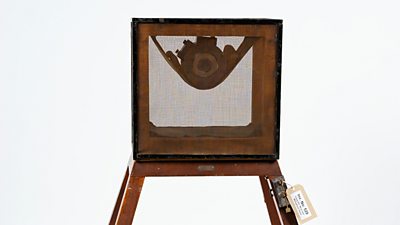
Lip Microphone
For sports commentaries and anywhere there was a noisy background, it was necessary to speak very closely into the microphone and even then the listener could often hear much more of the background noise than was really wanted. In 1937 the 大象传媒 designed this microphone to overcome this problem.
A metal guard ring at the front of the microphone gives a precise speaking distance of 2 1/2 inches when pressed against the top lip. For this reason these microphones became known as "lip microphones", sounds coming from further away than this distance tend to cancel each other out. The design was improved in 1951 and has since been refined further.
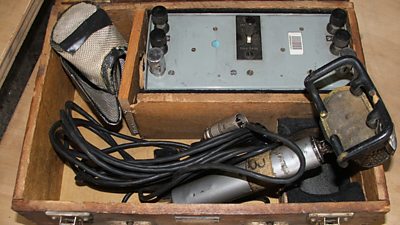
Edward VIII microphone
Two matching microphones and a complementary cue-lamp were provided by the 大象传媒 for the outgoing King's broadcast to the nation from Windsor Castle on 10 December 1936. Sir John Reith introduced the broadcast after giving Edward a voice test (he asked him to read some text from the sports pages of a newspaper).
Reith's diaries reveal that during the handover, Edward bumped the table at which he was seated - accounting for an audible thump, which led some listeners to think Reith had left the room and slammed the door.
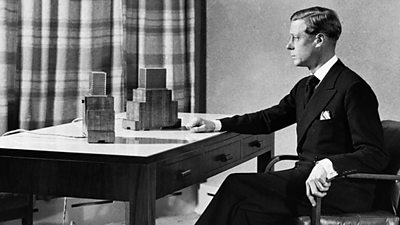
Early 大象传媒 radio crystal set
The earliest and cheapest radio set for the home was the crystal set. The essential components were a fragile fine wire (the 'cat's whisker') acting as an aerial connected to a small piece of mineral crystal such as galena, which received and converted the signal to audio that can be listened to on headphones.
Sound quality was relatively poor, and the set could only really be listened to by one person. But they had the advantage of requiring no power, operating purely on the energy in the radio signal. From 1922 to 1927 the syndicate of radio manufacturers who comprised the British Broadcasting Company developed numerous sets, which were all badged with the Company's 大象传媒 logo.
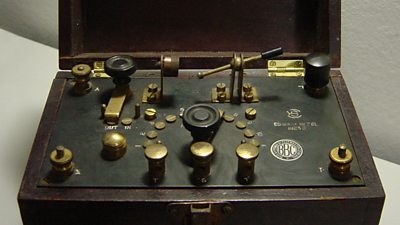
World's first outside broadcast TV cable
In May 1937 the coronation of King George VI took place and the fledgling 大象传媒 television service was determined to televise as much of the event as possible. Permission could not be obtained to put television cameras into Westminster Abbey, so it was decided to televise the scene from Hyde Park Corner. However, the major problem was how to get the signals all the way from there to the TV transmitter at Alexandra Palace.
A special cable was designed, measuring about an inch (2.5 cm) in diameter, containing a pair of copper conductors surrounded by a copper screen with the whole lot covered in a protective lead sheath. This small sample is the only surviving example of this, making this curio the world's first television outside broadcast cable.
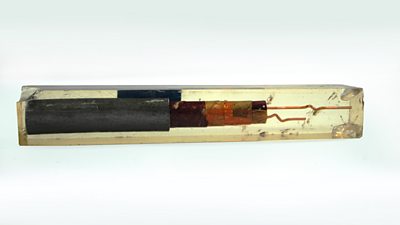
Round-Sykes Microphone 1923
Within six months of the start of broadcasting by the newly formed 大象传媒, a new and considerably improved microphone was introduced. Unlike its predecessors, it did not suffer from the high background noise (not unlike the sound of frying eggs!).
Developed by Captain Round of the Marconi Company, it consisted of a circular electromagnet about five inches (12.5 cm) in diameter and was extremely heavy. It was used for the 1924 outside broadcast of the song of a nightingale. Initially, curious noises were picked up by the Round-Sykes microphone - so sensitive was it - including the buzzing of flies and the sound of rabbits nibbling the wires.
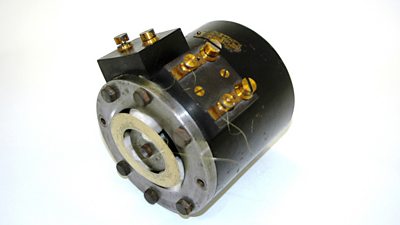
Further reading
-
Amanda Lynsdale details some surprising discoveries while cataloguing the collection at the National Science and Media Museum
-
First published in 1972, 大象传媒 Publications 漏1972. PDF version with thanks to Nick Cutmore and Philip Laven.

